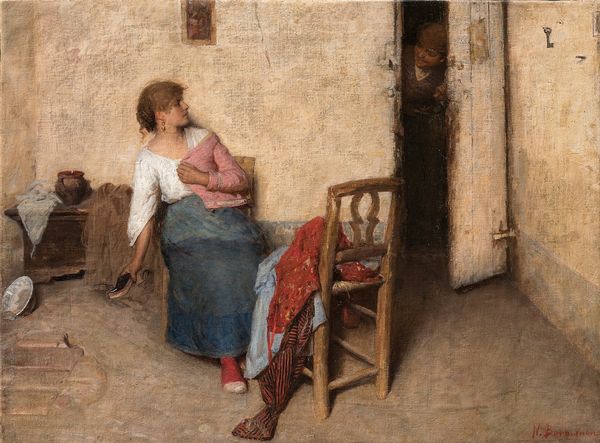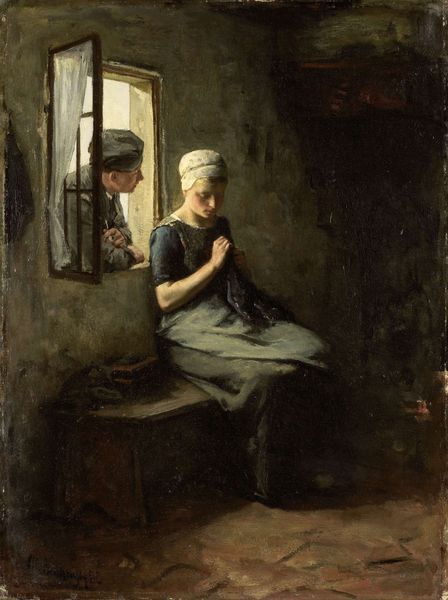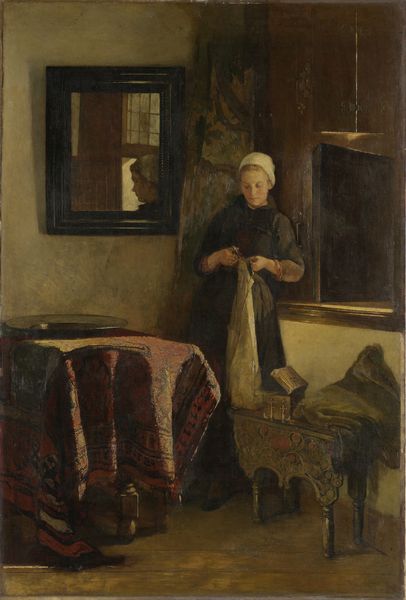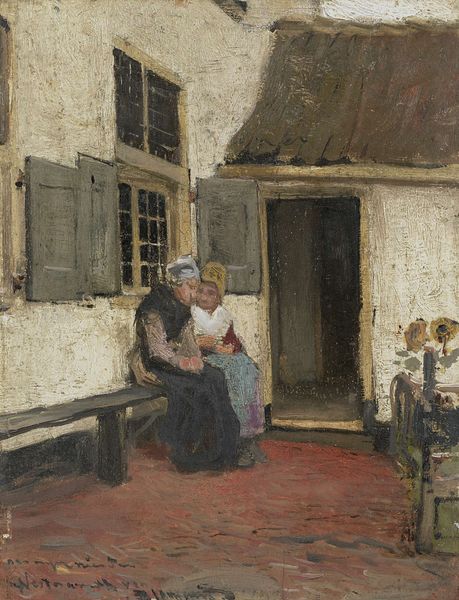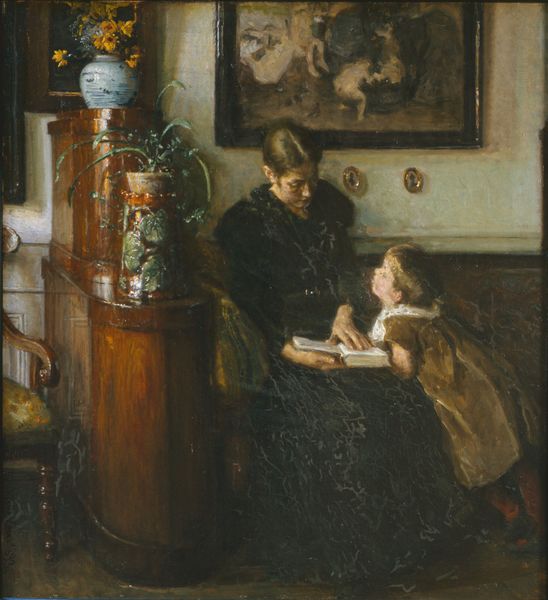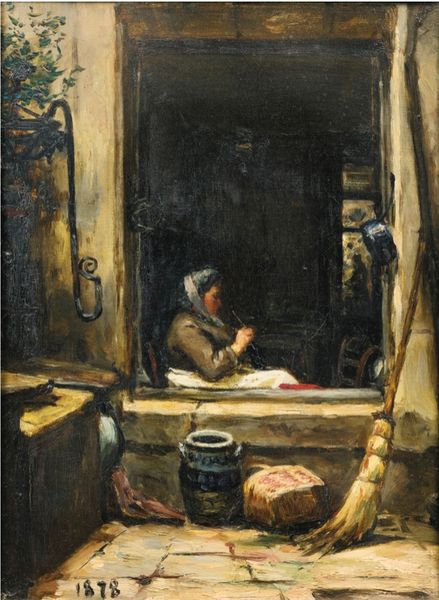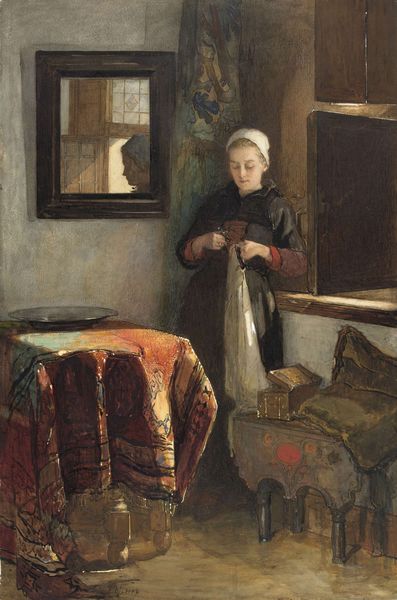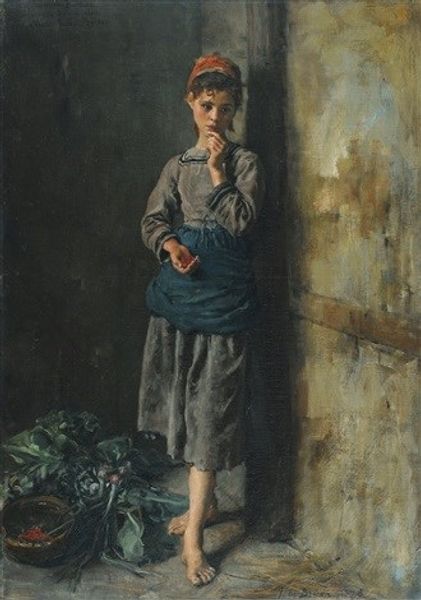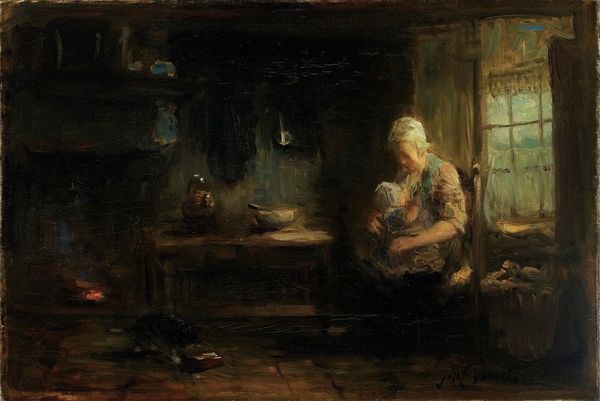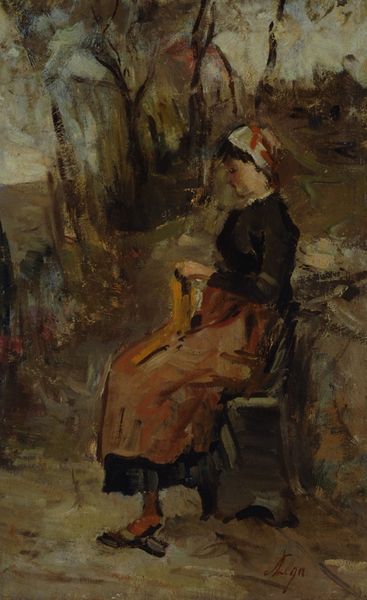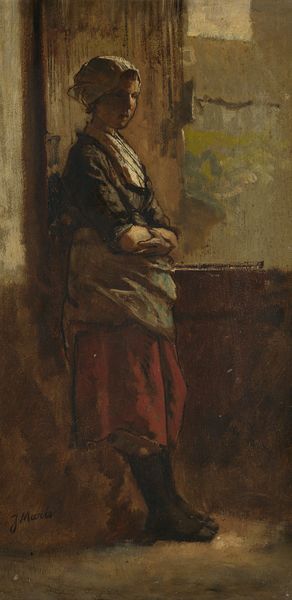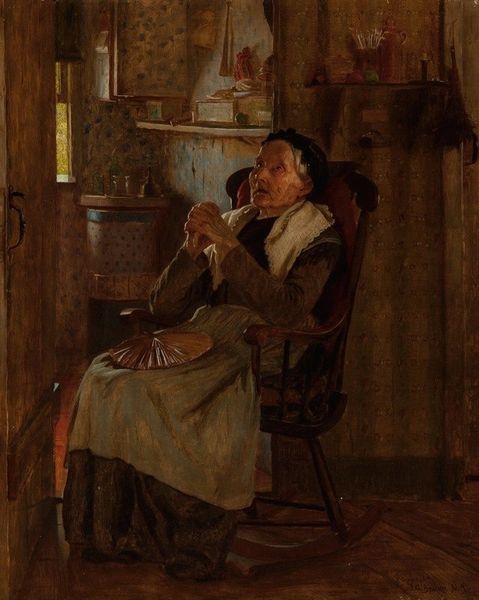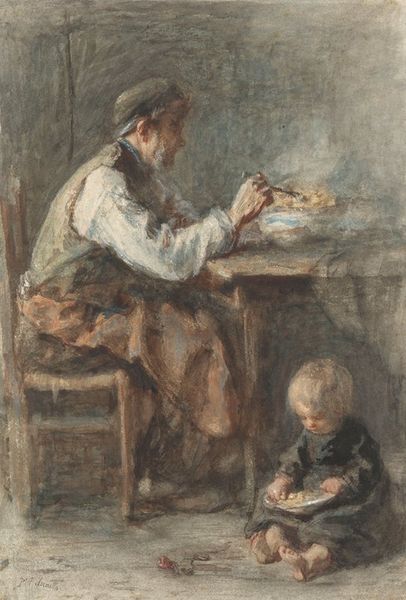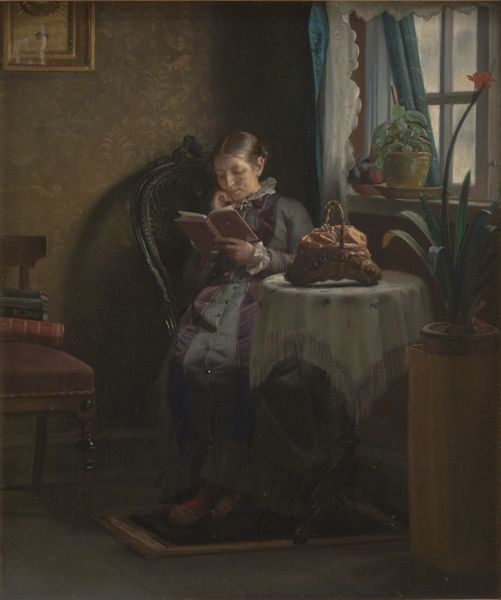
Dimensions: 43 x 52 cm
Copyright: Public domain
Curator: This oil painting is entitled "Die Tiroler Kellnerin," or "The Tyrolean Waitress," by Albin Egger-Lienz, created in 1903. What’s your initial read? Editor: Oh, moody! It's that turn-of-the-century gloom, right? But there's also this cozy, lived-in feel, like a Vermeer but make it alpine. I’m pulled in by the play of light – a bit drab up front, but that golden glow coming from the back room is just wonderful. Curator: Exactly! It really speaks to the symbolism of light, and darkness here – shadow being very present, which plays a huge role in Tyrolean culture and their overall social fabric. The composition is interesting, isn’t it? Egger-Lienz is setting up multiple frames within frames: we see the waitress in the foreground, and then a doorway pulls our eye into another space where we see a figure in the background, in the warmer light. Editor: Absolutely. It almost feels like she's caught between worlds – the subdued front where she's working and that promise of convivial activity in the back. Her gesture with the pitcher, almost sacramental, contrasts with the everyday labor of serving. Curator: I’m also struck by her attire and how this embodies traditional symbols within the region. Every fold in her dirndl whispers something about cultural heritage. Even that little bag hanging from her waist – the cut, material. They are symbols of her identity as a hard-working woman in this specific time and place. And beyond her specific characterization in the painting, this figure resonates deeply within collective memories around the serving female body within these settings. Editor: You're right, the traditional clothing and gesture with the pitcher bring so much emotional baggage along with it – but what about her expression? It’s subtle, almost wistful. She isn’t making eye contact; she is trapped within these endless cyclical motions… And is that contentment, longing, or just plain resignation? I wonder... Curator: The artist might’ve used her gaze to convey deeper social undertones on working-class life. Egger-Lienz employs familiar visual codes—the costume, the tavern, and the pouring gesture, to depict very modern ideas on industrial labor as it transforms old traditions. It is definitely not what it seems at first sight! Editor: Not at all! It makes you rethink that first impression of just alpine coziness. Curator: Right, and that's what keeps me coming back to this piece: the artist invites us into familiar settings and then subtly prompts us to think deeper. Editor: Definitely a mood and so much more, it resonates well beyond the merely picturesque!
Comments
No comments
Be the first to comment and join the conversation on the ultimate creative platform.
